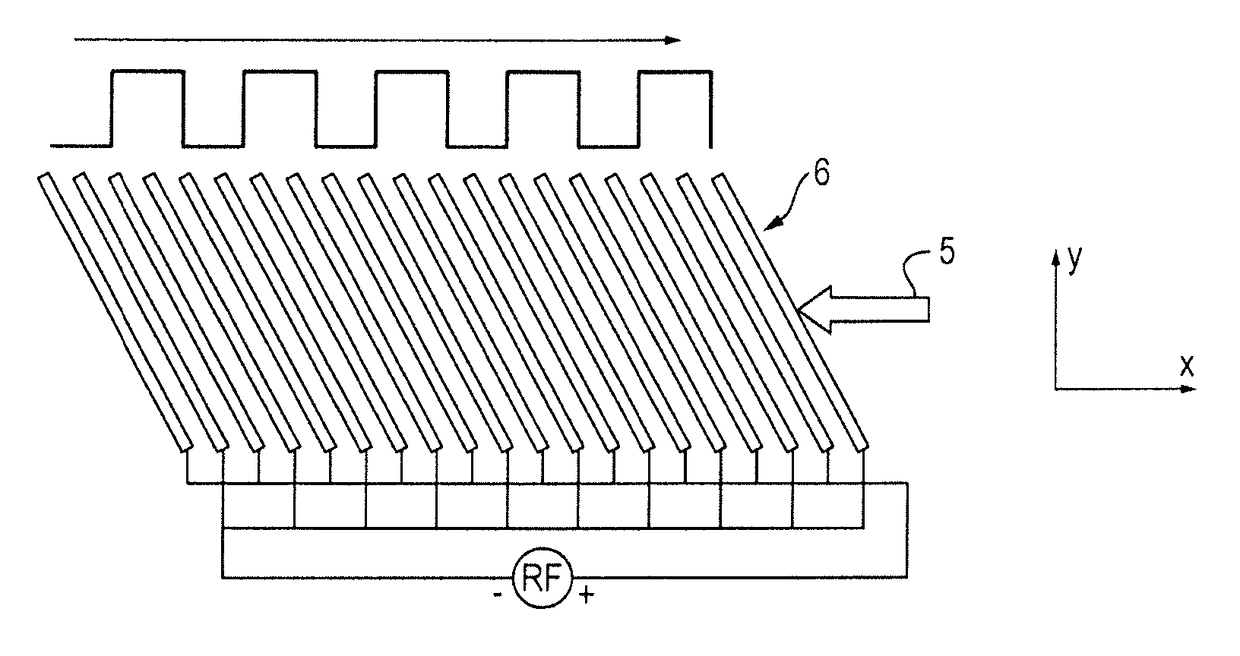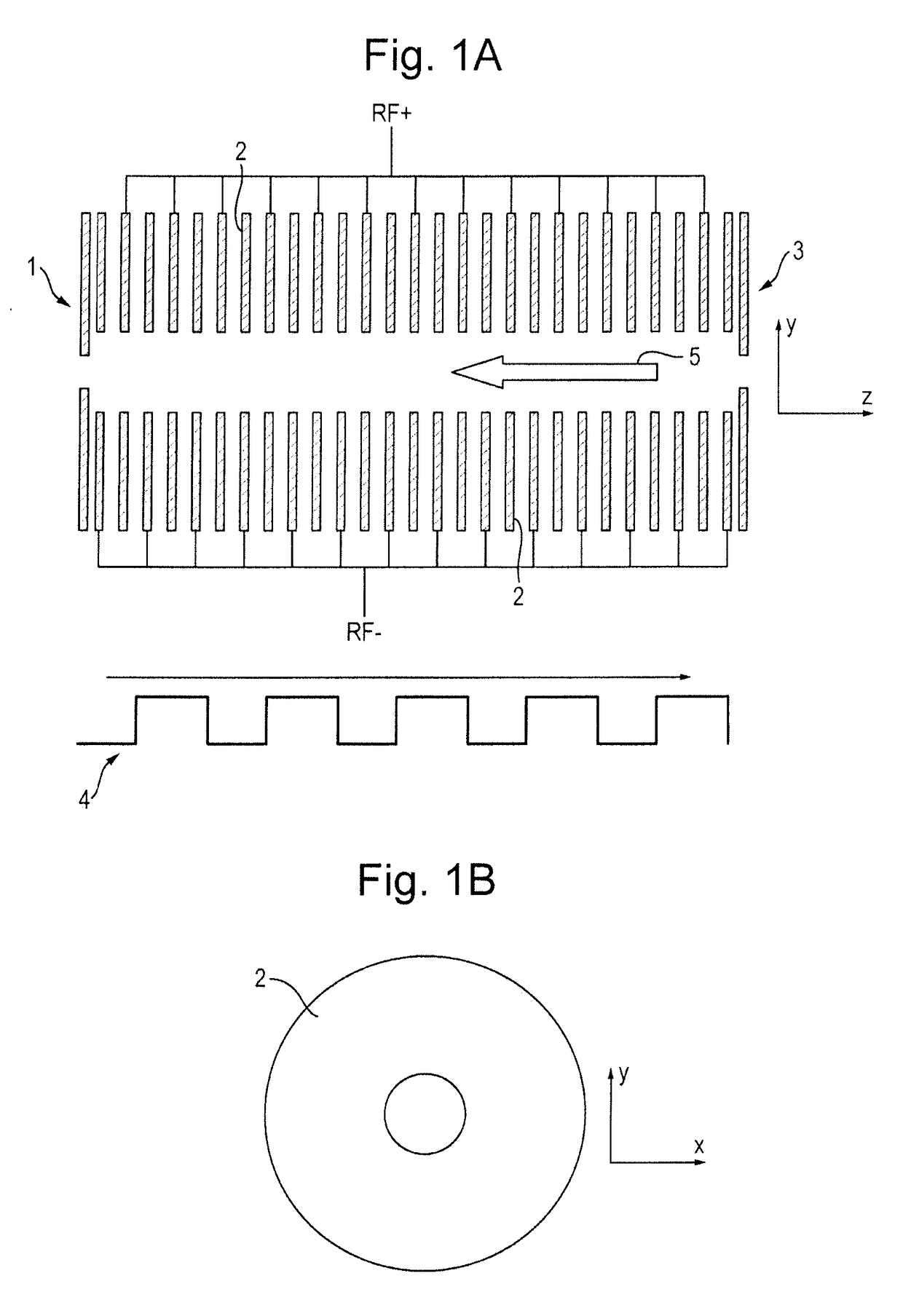Travelling wave IMS with counterflow of gas
a technology of ims and travel wave, applied in the field of ion separation devices, can solve the problem of not offering any other improvement, and achieve the effect of reducing the gas flow velocity
- Summary
- Abstract
- Description
- Claims
- Application Information
AI Technical Summary
Benefits of technology
Problems solved by technology
Method used
Image
Examples
Embodiment Construction
[0245]A preferred embodiment of the present invention will now be described with reference to FIG. 1A.
[0246]FIG. 1A shows a preferred embodiment of the invention wherein an ion mobility separator or other separation device is provided comprising an RF confined ring stack arrangement. The RF ring stack preferably comprises an entrance electrode 1, a series of intermediate ring electrodes 2 and an exit electrode 3. Opposite phases of an AC potential oscillating at RF frequency are preferably applied to alternate ring electrodes 2 in order to produce a radial RF confining force or pseudo-potential. The ring stack preferably comprises a plurality of electrodes each having an aperture through which ions are transmitted in use. Alternative embodiments are also contemplated wherein the ion mobility separator or other separation device comprises a segmented multipole rod set or a plurality of planar electrodes arranged generally in a plane parallel to the plane in which ions travel through ...
PUM
| Property | Measurement | Unit |
|---|---|---|
| velocity | aaaaa | aaaaa |
| Pressures | aaaaa | aaaaa |
| Pressures | aaaaa | aaaaa |
Abstract
Description
Claims
Application Information
 Login to View More
Login to View More - R&D
- Intellectual Property
- Life Sciences
- Materials
- Tech Scout
- Unparalleled Data Quality
- Higher Quality Content
- 60% Fewer Hallucinations
Browse by: Latest US Patents, China's latest patents, Technical Efficacy Thesaurus, Application Domain, Technology Topic, Popular Technical Reports.
© 2025 PatSnap. All rights reserved.Legal|Privacy policy|Modern Slavery Act Transparency Statement|Sitemap|About US| Contact US: help@patsnap.com



